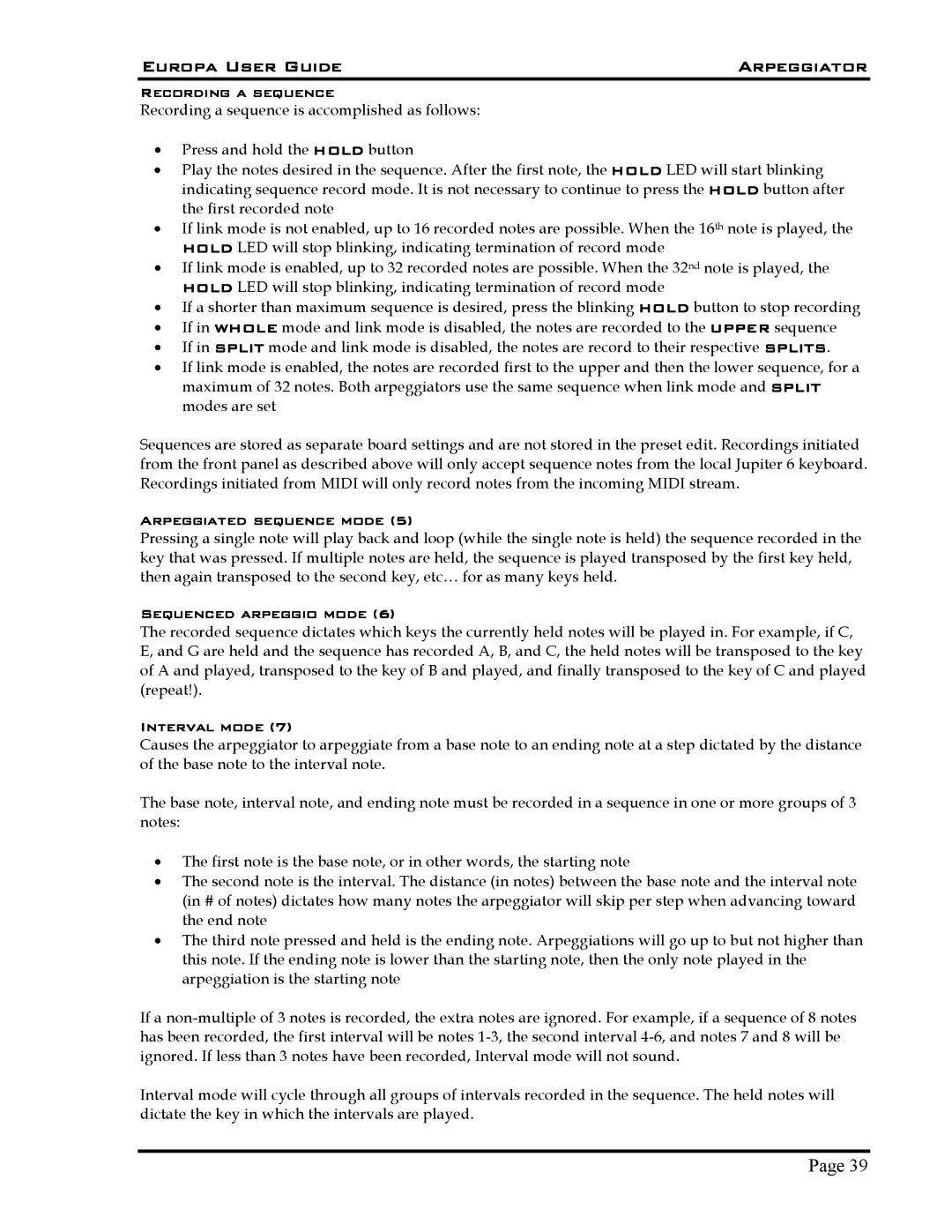Europa User Guide | Arpeggiator |
Recording a sequence
Recording a sequence is accomplished as follows:
•Press and hold the HOLD button
•Play the notes desired in the sequence. After the first note, the HOLD LED will start blinking indicating sequence record mode. It is not necessary to continue to press the HOLD button after the first recorded note
•If link mode is not enabled, up to 16 recorded notes are possible. When the 16th note is played, the HOLD LED will stop blinking, indicating termination of record mode
•If link mode is enabled, up to 32 recorded notes are possible. When the 32nd note is played, the HOLD LED will stop blinking, indicating termination of record mode
•If a shorter than maximum sequence is desired, press the blinking HOLD button to stop recording
•If in WHOLE mode and link mode is disabled, the notes are recorded to the UPPER sequence
•If in SPLIT mode and link mode is disabled, the notes are record to their respective SPLITS.
•If link mode is enabled, the notes are recorded first to the upper and then the lower sequence, for a maximum of 32 notes. Both arpeggiators use the same sequence when link mode and SPLIT modes are set
Sequences are stored as separate board settings and are not stored in the preset edit. Recordings initiated from the front panel as described above will only accept sequence notes from the local Jupiter 6 keyboard. Recordings initiated from MIDI will only record notes from the incoming MIDI stream.
Arpeggiated sequence mode (5)
Pressing a single note will play back and loop (while the single note is held) the sequence recorded in the key that was pressed. If multiple notes are held, the sequence is played transposed by the first key held, then again transposed to the second key, etc… for as many keys held.
Sequenced arpeggio mode (6)
The recorded sequence dictates which keys the currently held notes will be played in. For example, if C, E, and G are held and the sequence has recorded A, B, and C, the held notes will be transposed to the key of A and played, transposed to the key of B and played, and finally transposed to the key of C and played (repeat!).
Interval mode (7)
Causes the arpeggiator to arpeggiate from a base note to an ending note at a step dictated by the distance of the base note to the interval note.
The base note, interval note, and ending note must be recorded in a sequence in one or more groups of 3 notes:
•The first note is the base note, or in other words, the starting note
•The second note is the interval. The distance (in notes) between the base note and the interval note (in # of notes) dictates how many notes the arpeggiator will skip per step when advancing toward the end note
•The third note pressed and held is the ending note. Arpeggiations will go up to but not higher than this note. If the ending note is lower than the starting note, then the only note played in the arpeggiation is the starting note
If a
Interval mode will cycle through all groups of intervals recorded in the sequence. The held notes will dictate the key in which the intervals are played.
Page 39
